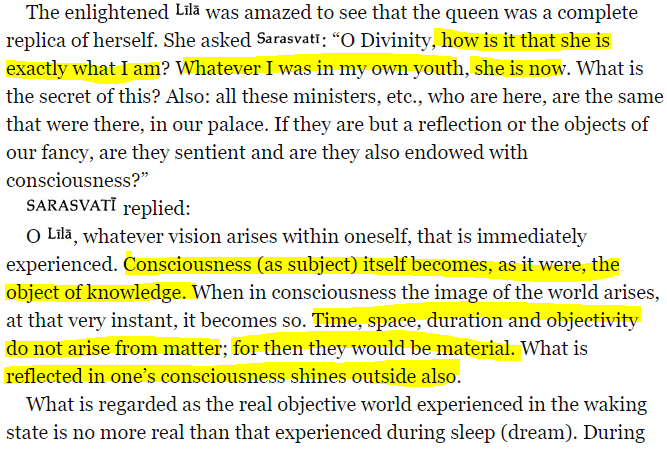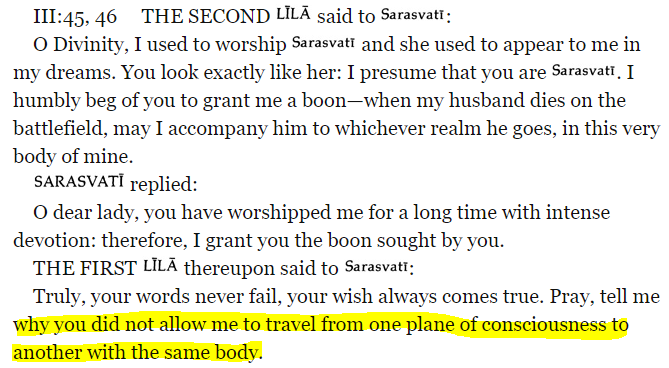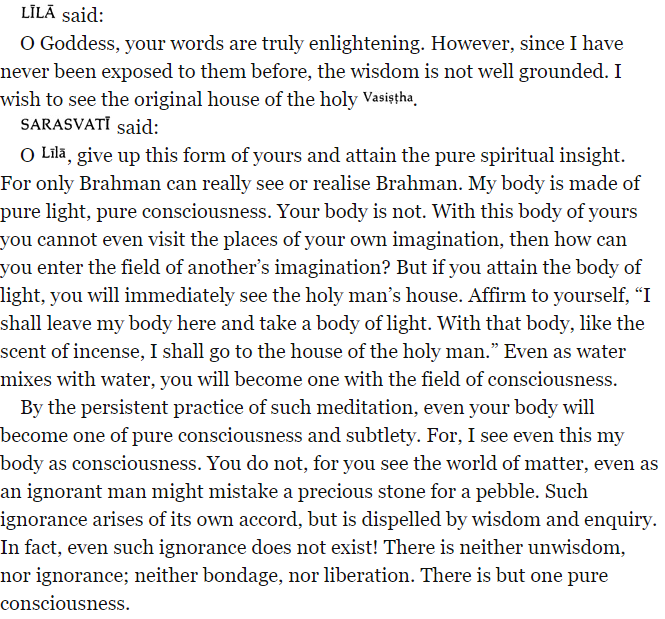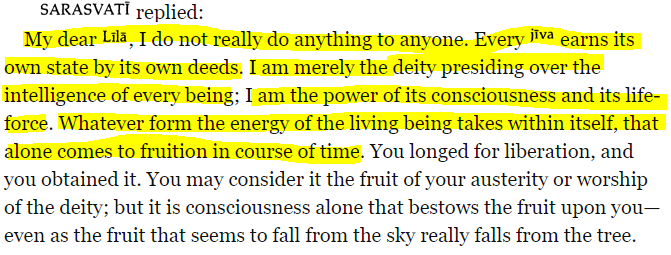How Tariffs, AI, and Robots Will Reshape Industry and Humanity
Tariffs are breaking old trade ties. AI and robots are rewriting the rules. The U.S.–China split is just the beginning of a new world map drawn in algorithms, not alliances.
Ram is the most important being in the spiritual realm in India and beyond. His story, Ramayana has been the most popular way to approach him. But you cannot know Ramayana's Ram without understanding Yoga Vashistha's Ram. We take that journey.


Ram is the most important being when it comes to a spiritual journey. In India and beyond (Indonesia, Thailand, Cambodia etc) Ram reigns supreme in the Dharmic consciousness.
The most important path to Ram has been his story in Ramayana, composed by Rishi Valmiki. But that is not all to Ram. There is another path - Yoga Vashishtha - which is far more profound and would act as the "Upanishad" to Ramayana.
Today we want to explore Ram in his entirety.
So to understand Ram, we will use both the tools - Ramayana and Yoga Vashishta.
This will be a series as well.
On the banks of river Tamasa, Rishi Valmiki used to live in an ashram with his disciples. He was visited by Devarishi Narad. Rishi Valmiki shared 16 qualities that a complete person would have. He asked Narad if there was a man with those qualities.

The Shlokas (verses) which share the questions from Valmiki are the following in Ramayana in Sanskrit. Unfortunately, their translation is done in the normal secular and modern way without full base in spirituality. We will look at the meaning of some of the words again.
तपःस्वाध्यायनिरतं तपस्वी वाग्विदां वरम् |
नारदं परिपप्रच्छ वाल्मीकिर्मुनिपुङ्गवम् || १-१-१
को न्वस्मिन् साम्प्रतं लोके गुणवान् कश्च वीर्यवान् |
धर्मज्ञश्च कृतज्ञश्च सत्यवाक्यो दृढव्रतः || १-१-२
चारित्रेण च को युक्तः सर्वभूतेषु को हितः |
विद्वान् कः कः समर्थश्च कश्चैकप्रियदर्शनः || १-१-३
आत्मवान् को जितक्रोधो द्युतिमान् कोऽनसूयकः |
कस्य बिभ्यति देवाश्च जातरोषस्य संयुगे || १-१-४
We will start from the first word - तपः
It has been translated everywhere in the Indian translations as Austerities.
Austerity is a word that comes from austere - which signifies cold, grave or stern in appearance, Purintanical or morally strict.
Basically, it signifies a behavior that negates life in a normal sense.
Is it the same thing as तपः ? For that let us look at how Krishna looks at the usefulness of work done in an austere way.
मूढग्राहेणात्मनो यत्पीडया क्रियते तप: |
परस्योत्सादनार्थं वा तत्तामसमुदाहृतम् || 19||
The Sadhana or spiritual work that is done in an austere manner - to hurt one's self is done by foolish ones.
So, तपः is sadhana done in a Dharmic way with the objective of seeking the Universal Truth. The Truth that is eternal. That which has no end and is unchanging is the only Universal Truth. In that sense, the Universal Consciousness in its most fundamental primordial sense has been considered to be the Eternal Truth. Its qualities and ways - eternal as they are - are the only Sanatan or eternal ways.
So taking तपः as the basis - the word स्वाध्यायनिरतं - is not the study of the Vedas as has been translated by most commentators. It is - one who is engaged in Sadhana to know the self. Knowing the fundamentals of who or what one is, is the final doorway to liberation.
Vedas are the manifestation of that path. Studying or reading something can never take you there. Delving into the exercise of knowing what or who one is, will.
The other portions of the four verses can be understood in that sense. Now, when one looks at the word द्युतिमान् - it is not in the normal physical sense even though it will reflect in the grace one emits.
The brilliance (or effulgence) is in the way of one's being or how fully the consciousness fully expresses itself beyond the limitations of the body (which is gross). A resplendent being - enlightened and expressing at the highest level of Universal Consciousness - shares an aura that is unmistakable. And, that is what द्युतिमान् really is in the physical sense - a radiant aura. Even when aura is a gross manifestation of something more fundamental - consciousness.
Narad said that there was one man with those qualities. His name was Ram. He then went on recount the story of Ram until the coronation of Ram as the ruler of Ayodhya.
Later Brahma manifested before Rishi Valmiki and asked him to narrate the life of Ram. Rishi Valmiki meditated on Ram to visualize his entire story. The Past and the Future.
This is when he composed the Ramayana.
This is the part that many know.
Many years hence an Apsara (celestial feminine being) named Suruchi was sitting on a peak in the Himalayas. She saw one of Indra's messengers flying past.
Suruchi stopped him to ask where was he headed. He informed her that a royal Sage Aristanemi had left his kingdom to his son and was in deep meditation and undergoing austerities. Indra's messenger had first offered him the experience of Swarg (heaven) with all the pleasures. When asked what happens post that, the Sage was told that he will take birth as a mortal again. The Sage rejected the "gift".
At this Indra wanted Sage Aristanemi to meet Sage Valmiki.
On meeting Valmiki, Aristanemi asked, "What is the best way to rid oneself of birth and death?"
At that time, Valmiki narrated the dialog between Ram and Sage Vashishta.
Valmiki then recounted that he had composed the story of Ram (Ramayana) earlier and had imparted it to his disciple Bhardwaj. Sage Bhardwaj shared it with Brahma who was very pleased. He asked Bharwaj to ask for a boon.
Bhardwaj asked, "All human beings may be freed from unhappiness."
Brahma then accompanies Bhardwaj to meet Valmiki to give him a message -
At first confused, he then realized that the portion of the story of Ram that was left unspoken was the one that is the most critical part of his life manifesting as the "raft to cross the ocean of existence and life."
Sage Valmiki then went to share with Bhardwaj the real story of how Ram attained his enlightenment thanks to Sage Vashistha
When Ram came back from his Guru's ashram, he was in the palace and after some time wanted to go on a pilgrimage.
When he returned from the pilgrimage, he became unusually quiet and withdrawn.
He had become weak, feeble, and despondent.
His father King Dasrath was worried and asked Sage Vashishta for help. Around that time Sage Vishwamitra arrived and asked the King for his son Ram's help to fight the Asuras (demons). Khar and Dusan's followers would invade the sacred premises and desecrate it.
King Dasratha said that Ram was not even 16 years, so if the Sage wanted, he himself could go but refused to send his son.
Vishwamitra was enraged at this but Sage Vashistha intervened and worked to align the King with the Sage's request.
When Ram was asked to come, a frail young man comes despondent. He shares how during his pilgrimage, he started questioning the meaning of life and how can one go beyond material and physical needs because they help in nothing.
Ram shares his understanding of life and the truth which leaves everyone spellbound.
The Sages are impressed by Ram's enunciation of many spiritual truths.
Vishwamitra shares the story of Shuka, the son of Ved Vyasa. How Suka was in a similar state and needed confirmation of self-knowledge. Once he received it from King Janaka, a highly evolved Sage in his own right, Shuka attained to enlightenment.
Vishwamitra then asks Sage Vashishta to take Ram through the process of enlightenment.
In Ramayana, the process that Sage Vashishta takes Ram through and the accompanying conversation is missing.

What happened thereafter in terms of the dialog between Sage Vashistha and Ram became part of possibly the most profound scripture ever received called Yoga Vashishta.

The first question Ram asks is about Vedvyas and his son Shuka.

What Vashitha shares thereafter is incredibly interesting. The current Vedvyasa they were encountering was the 23rd manifestation. And in this version of life, the Sage was a liberated being.

And so started Yoga Vashishta.
It is this part of Ram's story - a dialog really - which is considered to be the tool for enlightenment.
To understand Dharma one needs to understand the basic elements and components of how to approach life and look at why and how things happen.
We will do so via the dialog between Sage Vashistha and Ram. In places, we will share the relevant aspects of Ram's life to reinforce the context.
It is NOT righteousness.
Righteousness is considered to be the quality of being morally right or justifiable. It has its origin in the Abrahamic belief systems. Abraham found righteousness not by work or self-effort but faith in God, as he described it.
What shall we say then that Abraham our father, as pertaining to the flesh, hath found? For if Abraham were justified by works, he hath whereof to glory; but not before God. For what saith the scripture? Abraham believed God, and it was counted unto him for righteousness. Now to him that worketh is the reward not reckoned of grace, but of debt. But to him that worketh not, but believeth on him that justifieth the ungodly, his faith is counted for righteousness. Even as David also describeth the blessedness of the man, unto whom God imputeth righteousness without works, Saying, Blessed are they whose iniquities are forgiven, and whose sins are covered. Blessed is the man to whom the Lord will not impute sin. (Romans 4:1-8)
Morality or preconceived notion of good or bad, right or wrong is essentially, fundamentally, and inherently against the very understanding of Dharma.
Without a clear enunciation of the distinction between right and wrong based on explicit and limited ideals, there is no morality.
And, in that lies the fundamental problem for a spiritual seeker.
That which has been defined cannot be sought. What one needs to explore needs no encumbrances of limitation or restriction.
Furthermore, following an edict, laid down law or principle, or ideal dulls the mind. It makes the mind believe as opposed to pushing it to seek and wonder.
When one has abandoned the question "I don't know" and instead buffed up his ignorance with made-up stories or notions not yet in his experience, one is in the realm of belief and Adharma.
For, Dharma needs a continued and relentless focus on the present moment as it brings the impact of prarabdha or past karmas to one's experience.
How one handles every moment, sans conditioning - is the essence of Dharma.
Let us understand Action aligned to Dharma.
In Bhagwad Gita for example, when Krishna discusses Karma or Action which is aligned with Dharma, he instructs thus in the Second chapter.
त्रैगुण्यविषया वेदा निस्त्रैगुण्यो भवार्जुन |
निर्द्वन्द्वो नित्यसत्त्वस्थो निर्योगक्षेम आत्मवान् || 2:45|
Go beyond the domain of the three gunas which is attained via scriptures, which can at best lead you to the saatvik state, to a point where you are established in Truth (नित्यसत्त्वस्थो) by being beyond Duality (निर्द्वन्द्वो). Nature of the physical is duality. Once you go beyond duality - advaita (अद्वैत) - you are beyond the physical realm and in the realm of Truth.
How does one be in that state?
यावानर्थ उदपाने सर्वत: सम्प्लुतोदके |
तावान्सर्वेषु वेदेषु ब्राह्मणस्य विजानत: || 46||
Whatever purpose/objective is gained from the well (यावानर्थ उदपाने), that all (and more) is attained from the larger flow/expanse of water (river/lake/ocean). Everything that (तावान्सर्वेषु) is attained from the Vedas (वेदेषु) is also realized (and more) by one who is established fully/completely विजानत: in Brahman (ब्राह्मणस्य).
What do these instructions state about Dharmic Action?
That is Dharma really.
Non-dual and thus eternal attained by self-knowledge via self-effort.
No God or fate has any hand in it.
So instructs Sage Vashistha to Ram.

Alignment to the Universal Consciousness or beyond duality has a few elements:
So, when you see Dharma in its fundamental sense, it is alignment with the Universal Consciousness.
When you see Dharma in its application form, its nature is always underlined by actions and qualities that lend themselves to the three basic elements shared above.
In Yoga Vasistha, Sage Vasistha shares a beautiful story about one queen - Queen Lila, and her husband King Padma. Queen Lila, does sadhana (spiritual practice) to attain to Goddess Saraswati and the Goddess appears to her and she helps the queen attain to an enlightened state where she is able to experience the one, undivided consciousness.
Goddess Saraswati helps her experience many different worlds that arise in the consciousness. They come to a vision where King Viduratha is ruling and while he is conversing with Goddess Saraswati, his kingdom is attacked and is being looted. He rushes to the battlefield as his Queen comes to attend to Queen Lila and Goddess Saraswati.
Queen Lila realizes that this queen is an exact replica of herself. Different realm, similar person. She asks the Goddess why this is so and the Goddess explains it to her.

This Second Queen Lila then has a conversation where she asks something from the Goddess. The Goddess allows. And the “enlightened Queen Lila is perplexed.

You see, she had had a similar ask from Goddess Saraswati although for a different reason, and at that time, the Goddess had instructed her to a meditative process to attain to her self of consciousness.

That is why the “enlightened Queen Lila” was perplexed at what the Goddess offered to the Second Lila.
Then Goddess Saraswati explains the most fundamental truth of Karma and Destiny. You are the maker.

“I do not really do anything to anyone. Every jiva earns its own state by its own deeds” She explains how it is the self-effort that is the basis of what one begets, not some boon.
“I am merely the deity presiding over the intelligence of every being.” The Goddess explains. “I am the power of its consciousness and its life force”
This is how Goddess Saraswati has been understood and attained to, by many. The way in which Sage Vasistha shared with Shri Ram when the latter was a 16-year-old kid.
The idea of worshipping Goddess Saraswati is not that one can get some education or knowledge without working for it. The main rationale for holding the deity of one’s consciousness the highest when one embarks on the journey of knowledge is to ensure that one’s knowledge is aligned to the true, undivided consciousness of this universe. One, that not just aligns with the universe, it is life-enhancing for every creature, form, and being that is in it. For, that is what Goddess Saraswati represents. The path to attaining the complete realization of consciousness so our exercise in the realm of knowledge and education is not narrow, parochial, ideologically bigoted, and self-serving.
Prahalad was the son of Hiranyakashipu. He was an Asura who was opposed to Vishnu and forbade anyone to worship him.
The story of Holi goes that there was a demon King Hiranyakashipu, who hated his son, Prahalad for worshipping God Vishnu. He had a sister, Holika who had a boon that she can never be burnt. To kill Prahalad, the king (his father) had him sit in Holika’s lap on a pyre - just in order to kill him. Strangely, Holika burnt and Prahalad came out alive.
This story is interesting but it does not explain anything much.
For simplicity, the believing Hindus have taken a very moralistic stand to say that this signifies the triumph of “Good over Evil”. We often forget, however, that stories in Hindu scriptures are mostly dialectic because they convey things to people who have reached a certain level of spiritual awakening.
On their own, the stories sometimes mean nothing. More importantly, Hindu scriptures and Spiritual paths are not obsessed with Good or Evil. The “Gods” described in the books certainly weren’t. If they were – even as the story suggests – Brahma would have never given a boon to an Asura or demon!
So how do we understand the story?
Holika had a device (boon) to save her from a natural element - fire. But she succumbed, while Prahalad went through unharmed.
So who was Prahalad really?
Prahalad was a devotee of Vishnu. Vishnu is the overall diety of the entire existence. In Spiritual terms, Vishnu is the Universal Consciousness!
What does it mean when we say that Prahalad was a devotee of Vishnu? When we say Vishnu “protected Prahalad”, what does it mean? Let us listen in to Prahalad himself:
However, one who is not Vishnu does not derive any benefit by worshipping Vishnu. One should worship Vishnu by being Vishnu. Hence, I am Vishnu. He who is known as Prahalad is none other than Vishnu; there is no duality. (Page 236, Part V, “The Story of Prahalad”)
When Prahalad said that he was no different from Vishnu, what does that mean?
This was shared by Sage Vashishta when had shared how Prahalad got enlightenment by the "grace of Vishnu" after extolling the criticality of Self-effort for a spiritual seeker.
Sage Vashishta explains that at the level at which Prahalad had reached via self-effort, his consciousness was the same as that of Vishnu.

Whatever Prahalad was - was nondifferent from Vishnu. Any difference is but semantics.
There is only Consciousness.
In that sense, every creation is a reverberation of the underlying consciousness through a gross physicality.
The nature of the gross physicality enhances or dulls the underlying universal consciousness.
Prahalad reached that level of consciousness where his self was non-different from Vishnu.
The very science of temple-making, Prana Pratishtha (consecration) and yogic Sadhana using Tantra, Yantra, and Mantra was to take one's consciousness to a reverberation that aligned itself with a certain level of consciousness where the impact of gross physicality was minimum.
The Gods and Goddesses, as they are loosely referred to, are consciousness levels that one can align with and even use for consecrating spaces.
The means to get there is self-effort as fashioned through spiritual sadhana.
Sadly, one of the things that most commentators have messed up is in interpreting Ramayana and what Valmiki shared in his verses.
Whatever Ram was taught by Sage Vashishtha has been negated and turned on its head by bad translation.
Let us look at an example. When Kaikeyi, the mother is Bharat (Ram's stepbrother) asked King Dashrath to fulfill two boons that he had granted her by saying the following, the whole kingdom was in shock.

In Ayodhyakand's 22 Sarga, there is a conversation between Ram and his brother Lakshman, who is livid with anger. In there Ram shares why it is happening.
कृत अन्तः तु एव सौमित्रे द्रष्टव्यो मत् प्रवासने |
राज्यस्य च वितीर्णस्य पुनर् एव निवर्तने || २-२२-१५
कैकेय्याः प्रतिपत्तिर् हि कथम् स्यान् मम पीडने |
यदि भावो न दैवो अयम् कृत अन्त विहितः भवेत् || २-२२-१६
If the award of the kingdom to me is revoked, O Lakshmana, and if I am banished in this manner, see, it is destiny. (15) If this thought and my misfortune were not caused in Kaikeyi by destiny, how could she muster such determination to inflict pain on me? (16) (Source: Valmiki Ramayana)
"Oh, Lakshmana! Look at it as destiny which has taken back kingdom given to me and which is sending me to exile. (15) -If not making of destiny to create such a thought in Kaikeyi, how come she resolved to harass?" (16) (Source: ValmikiRamayana.net)
In both translations, the word कृतान्त has been translated as "Destiny". And the commentators show Ram decrying his destiny for placing him where he is - banishing from the kingdom by Kaikeyi.
For someone who does not know Ram from Yoga Vashishta can make this gross caricature of Ram. But if you have been through the central precepts of Yoga Vashishta, you will realize that what Ram is saying is something totally different.
What he is saying in the verse:
कृत अन्तः तु एव सौमित्रे द्रष्टव्यो मत् प्रवासने |
Should be understood as - The exile should really be seen as a result of actions (past)
And this verse - यदि भावो न दैवो अयम् कृत अन्त विहितः भवेत्
Should be understood as - Even when it seems like a divine will (दैवो) it is determined (विहितः) by the result of actions (past).
We will undertake the detailed note on Ram and Sita's relationship in a subsequent post. But knowing who Ram was given his conversations with Sage Vashishtha, one needs to see them as one express of the Universal Consciousness. And in that lies the secret of the physical expression of love and separation of the two.
There are very few conversations about spiritual subjects by Western disciples that are substantively useful. This is one of those rare ones which is. Aghoris are a difficult subject. Ranveer, though very smart, is struggling with understanding what Dr. Robert Svoboda has to share. Yet, it is one of the most invigorating conversations I have heard in a while.